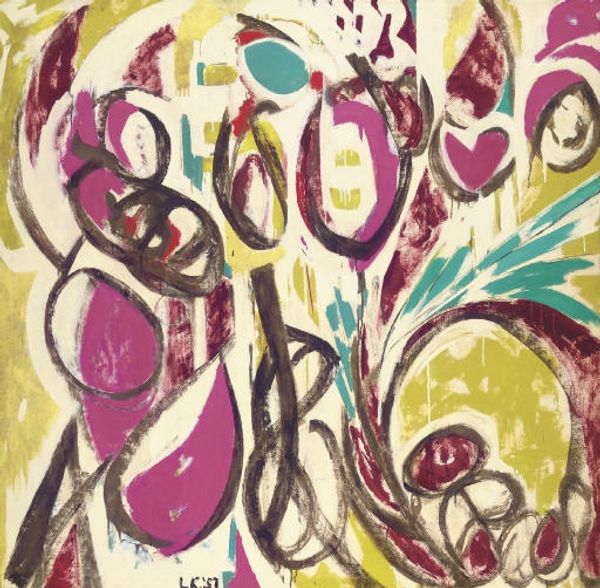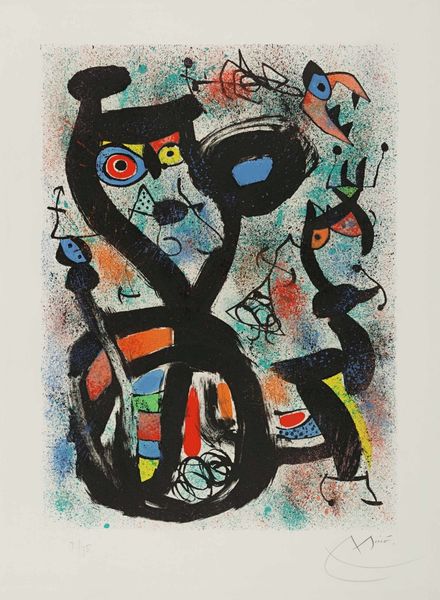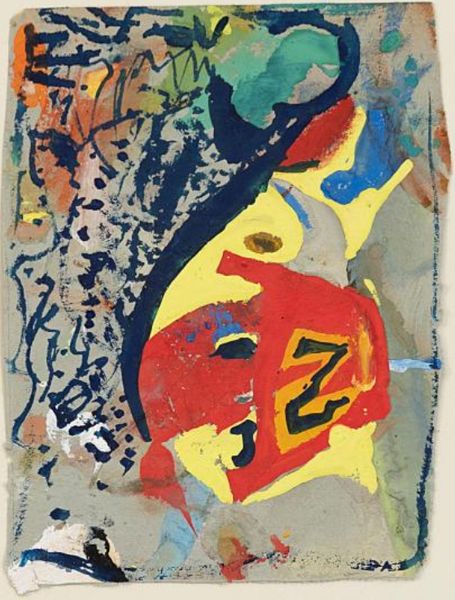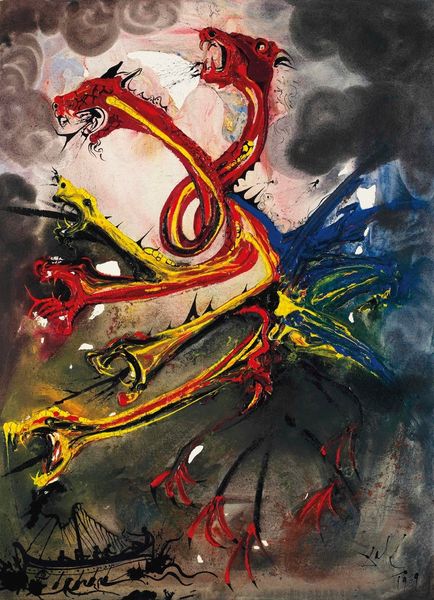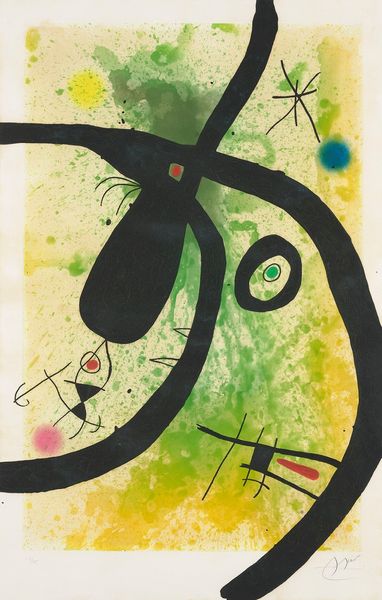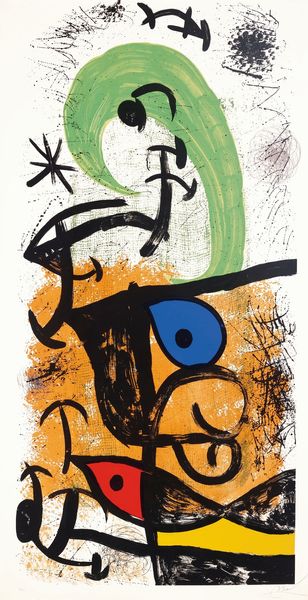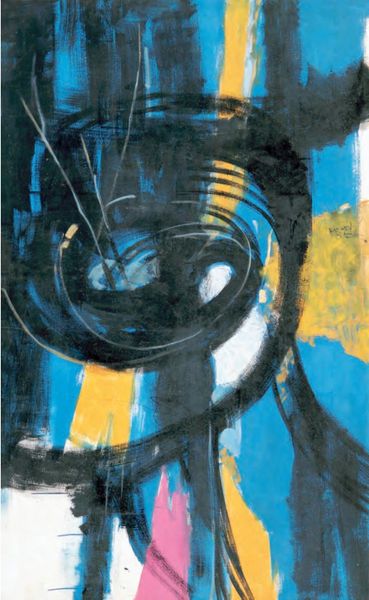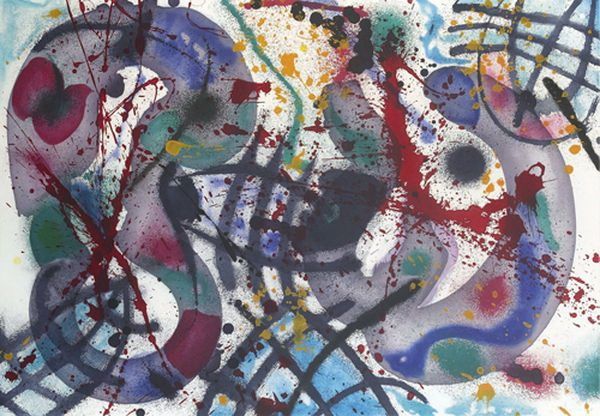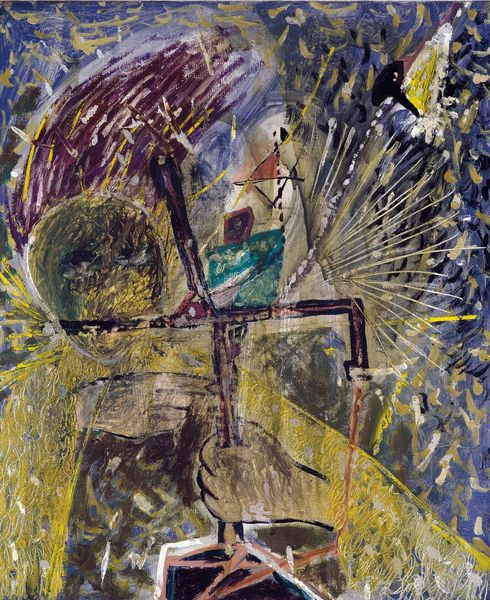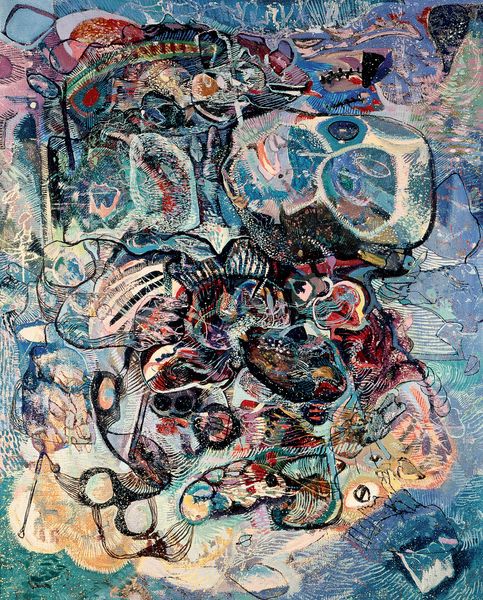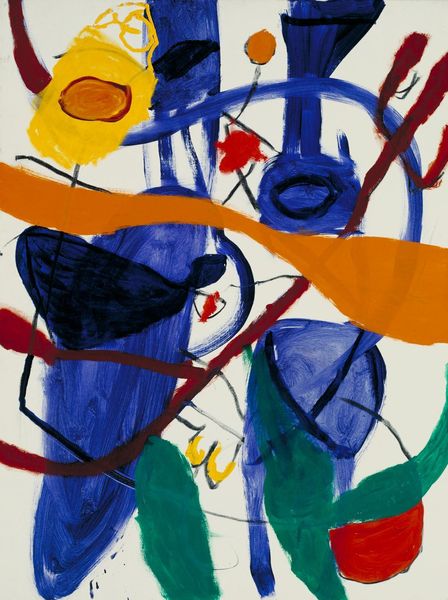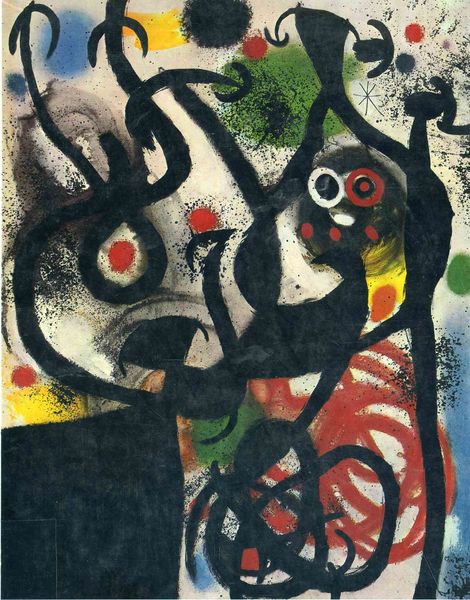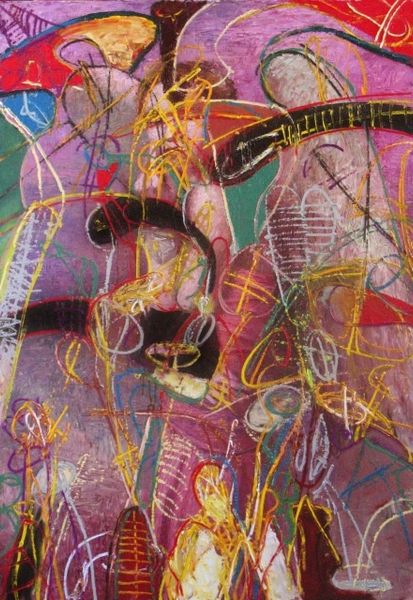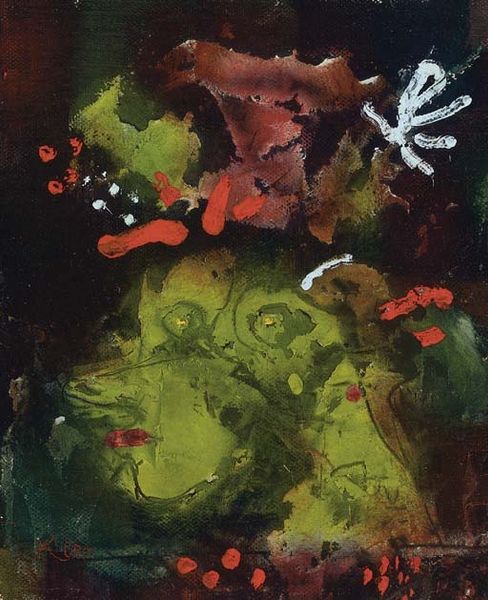
painting, acrylic-paint
#
painting
#
acrylic-paint
#
abstract
#
form
#
line
#
surrealism
#
modernism
Copyright: Modern Artists: Artvee
Curator: Look at this painting! Miró's "Femme avec un papillon posé sur sa tête," made in 1971 with acrylic paint, really grabs your attention, doesn't it? What are your first thoughts? Editor: Chaos, but contained. The black lines are bold, almost aggressive, yet the spattering of colours behind feels playful, light. It's like a construction site made of dreams. I'm interested in the physical presence of this work, that black pigment sitting atop layers. Curator: A construction site of dreams, I love that. It’s that Miró magic. You can almost feel him letting his subconscious guide the brush. He believed art should come from the irrational, the impulsive. I imagine him almost dancing as he painted this. Editor: Dancing with very specific materials though, right? We're talking acrylic paint here - a product of the twentieth century. What impact do you think that shift in painting material has? Moving away from traditional oils... how did that change the artistic outcome? Curator: It absolutely impacted him. Acrylic allowed for those brighter colors and the quicker drying time meant he could layer more rapidly, keep up with the flow of his mind, perhaps? Editor: Speed definitely plays into it, and that's not just about the drying time. These materials are readily available and allow for an amazing burst of production. It almost begs the question if that frantic energy can ever translate to the canvas… or, even, if it ought to. Does quantity devalue the individual work? Curator: That's a spicy question! For Miró, I don't think so. Each piece is like a snapshot of a particular moment in his psyche. The repeated motifs, the "woman", the stars, it is almost as if the works themselves constitute a broader story. What's this "woman" if not just more material on the canvas? Editor: True enough, there is something deeply honest about engaging so thoroughly with one’s base matter. The materials, the artistic traditions, all of them subject to both our intention, our conscious construction, as well as our accidental touch. So, what begins as a dream takes real shape thanks to pigment and the push-pull relationship inherent to artistic mediums. Curator: Exactly. Seeing it this way, it all suddenly makes so much sense, thank you. Editor: Always!
Comments
No comments
Be the first to comment and join the conversation on the ultimate creative platform.
